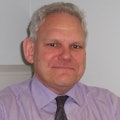Resilient Structures and Construction Materials (RESCOM) research aims to improve the sustainability and resilience of the built environment.
A particular focus of our work is the development and testing of biomimetic materials and intelligent structures. An increasingly important part of this research is life-cycle assessment and the development of methods for evaluating the in-service and long-term performance of these materials and structures.
A notable feature of our approach to solving problems is the close integration of experimental and numerical research.
Numerical research involves the development and validation of computational models for new and existing cementitious materials, and their application to real structures. RESCOM’s experimental research encompasses proving of efficacy of new materials, the characterisation of materials and testing structural elements at small and large scales.
Expertise
- Materials science
- cement and concrete science
- water transport in cementitious systems
- numerical modelling
- smart engineering
- self-healing materials
- sustainable materials
- structural resilience engineering
- conservation engineering
- retrofitting of cultural heritage
- preservation of existing structures and infrastructure to natural hazards
- life cycle assessment
- carbon footprint
What we do
- Laboratory-based investigation
- numerical modelling and simulations
- structural design
- pilot-scale and large-scale experiments
- life cycle analysis (LCA)
- performance-based seismic design and assessment
- strengthening of cultural heritages
- disaster risk reductions
- resilience enhancement against natural hazards.
Research
The RESCOM group has a varied portfolio of research encompassing experimental testing, computational modelling, risk modelling, and the design and management of sustainable resilient construction materials and structures. The group has a unique combination of expertise and laboratory facilities to fully develop and investigate sustainable construction materials experimentally and simulate their behaviour numerically at multiple scales. The research activities of the group fall into three focus areas:
Sustainable Construction Materials
RESCOM members are actively involved in (i) the development and analysis of low carbon cements, enhancing the performance of historic materials and structures; (ii) biomimetic and functionally graded cementitious materials and the inclusion of waste materials in concrete; (iii) the numerical simulation of quasi-brittle materials in general; and (iv) the development and analysis of high performance fibre reinforced cementitious composites.
Resilient Structures
Embedding resilience in structures, through their design, repair or rehabilitation is a key action in achieving a net zero future. Group activities in this area include: (i) the development of catastrophe risk modelling tools to understand the resilience of vulnerable structures when subject to multi-hazards; (ii) long-term modelling and experimental simulations of structural elements; (iii) structural adaptation and refit for future resilience, learning from historic structures; and (iv) the analysis and mitigation of progressive collapse in existing structures via examination of load paths, redundancy in structural systems, and the implementation of retrofitting strategies.
Digital and data driven design
Digital technologies, including AI and remote monitoring, play a pivotal role in enhancing robustness by enabling real-time monitoring, early warning systems, and data-driven decision-making, thus improving safety and resilience in the face of evolving challenges and threats. The group draw on a number of data streams to model, simulate, design and analyse novel and existing materials and structures. We use digital techniques for the prediction of long-term structural performance and use life cycle modelling techniques to demonstrate the associated cost and life cycle benefits for clients and asset owners.
Facilities
The RESCOM group users have access to dedicated experimental facilities to design, prepare, characterise and test building materials, as well as a growing suite of equipment to simulate ageing and deterioration.
Projects
Biomimetic Immunising System for the Preservation of Historic Masonry Structures funded by The Leverhulme Trust, Fellowship ECF 235
Climate change is exposing our built heritage to greater and more extreme hazards. Historic masonry repair technologies must evolve in response to these, promoting a new, long-term resilient preservation strategy. Placed wholly within the mortar joint, the proposed technology comprises biomimetic conductive vascular networks hosting healing agents that are released when threshold damage is exceeded. Healing agents are selected to be compatible with and sympathetic to the conservation requirements.
Self-healing Multifunctional Advanced Repair Technologies in Cementitious Systems (SMARTINCS), €4M, 2019 – 2023 (EU agreement 860006)
The EU-funded SMARTINCS project will train a new generation of creative and entrepreneurial early-stage researchers (ESRs) in the prevention of deterioration of new concrete infrastructure via innovative self-healing strategies. It will also train them in advanced repair technologies for maintaining existing concrete infrastructure. The project brings together the complementary expertise of research institutes pioneering in smart cementitious materials, strengthened by leading companies along the SMARTINCS value chain, as well as certification and pre-standardisation agencies.
Past projects
Engineering Microbial-Induced Carbonate Precipitation via Meso-Scale Simulations, £1M 2019-2022
Engineers have proposed a revolutionary solution, which was inspired by nature: self-healing materials able to self-repair as a result of the metabolic activity of bacteria. The main mechanism of concrete healing is the microbial-induced precipitation of calcium carbonate (MICP), which fills the cracks of the damaged material. In this project we aim to provide a new theoretical basis to predict the most promising combinations of bacteria and concrete, once the application-specific chemical compositions of the concrete of the surrounding environment are identified. This will establish a new paradigm for the digital design of concrete-bacteria systems and will enable technology transfer across the constructions sector. Read more about the project.
Resilient Materials for Life (RM4L) 2017 – 2022 £4.8M (EPSRC Reference: EP/P02081X/1)
Resilient Materials for Life (RM4L)”is an EPSRC funded project being undertaken by researchers at Cardiff, Bath, Bradford and Cambridge Universities.
The project comprises four research themes which address: self-healing of cracks at multiple scales; self-healing of time-dependent and cyclic loading damage; self-diagnosis and immunisation against physical damage; and self-diagnosis and healing of chemical damage.
These themes bring together complementary technologies using laboratory experiments, numerical modelling and site trials which, under the guidance of the project’s industrial partners (Costain, Jacobs, HS2, Highways England, Micropore, Environment Agency, Cemex, etc), addressing a diverse range of applications such as cast in-situ and precast concrete, repair systems, overlays and geotechnical systems. The nature of the research is both varied and exciting, encompassing the fundamental physico-chemical actions of innovative healing systems.
List of relevant publications
- Balzano, B.et al. 2021. Enhanced concrete crack closure with hybrid shape memory polymer tendons. Engineering Structures 226.
- De Nardi C. et al. 2020. Development of 3D printed networks in self-healing concrete. Materials 13(6).
- Freeman, B. L. and Jefferson, T. 2020. The simulation of transport processes in cementitious materials with embedded healing systems. International Journal for Numerical and Analytical Methods in Geomechanics 44(2).
Self-healing geological construction materials and structures (GEOHEAL), 2018 – 2020, €183k (EU agreement 745891)
During the GEOHEAL project, our objectives focused on the development, application and assessment of biological healing and self-healing mechanisms for repairing and preventing damage in cementless construction materials, such as natural stone. The direct compatibility of the biological healing products, such as calcite, with stone materials, enables their application in heritage conservation, and significant reduction of maintenance costs in both existing and new structures. Read more about self-healing masonry
Materials 4 Life (M4L), 2013 – 2016, £1.7M (EPSRC Reference: EP/K026631/1)
This project involved the development of a new generation of unique, versatile and robust self-healing construction materials, which are self-healing over multiple spatial and temporal scales.
The project was conducted by a consortium from the Universities of Cardiff, Bath and Cambridge, three of the top UK academic institutions, which have the required interdisciplinary mix of civil engineering and science skills and expertise and are uniquely placed to lead this novel and challenging research endeavour both nationally and internationally. The project led to the first UK site trail of self-healing concrete. Learn more about the M4L project.
List of relevant publications
- Davies et al. Large Scale Application of Self-Healing Concrete: Design, Construction, and Testing. Frontiers in Materials, 2018.
- A shape memory polymer concrete crack closure system activated by electrical current. Smart Materials and Structures, 2018.
- Botusharova et al. Augmenting Microbially Induced Carbonate Precipitation of Soil with the Capability to Self-Heal. Journal of Geotechnical and Geoenvironmental Engineering, 2020.
Meet the team

Professor R. (Bob) Lark
Emeritus Professor
Networks
Self-healing as prevention repair of concrete structures (SARCOS), 2016 – 2021
SARCOS is a EU COST Action (CA15202) aimed at providing a framework to advance the implementation of innovative and sustainable solutions for extending the service life of concrete structures.
Under SARCOS, international meetings, training schools for researchers, conferences and short-term scientific missions have been organised, leading to fruitful collaborations between the RML4 group and other European Universities and organisations.
Other network and contacts
The RESCOM team is actively collaborating with the Cardiff Materials Research Network, and other University groups, and it is actively engaged with external organisations such as RILEM, the ICE, COSTAIN, Highways England.
Next steps
Research that matters
Our research makes a difference to people’s lives as we work across disciplines to tackle major challenges facing society, the economy and our environment.
Postgraduate research
Our research degrees give the opportunity to investigate a specific topic in depth among field-leading researchers.
Our research impact
Our research case studies highlight some of the areas where we deliver positive research impact.













